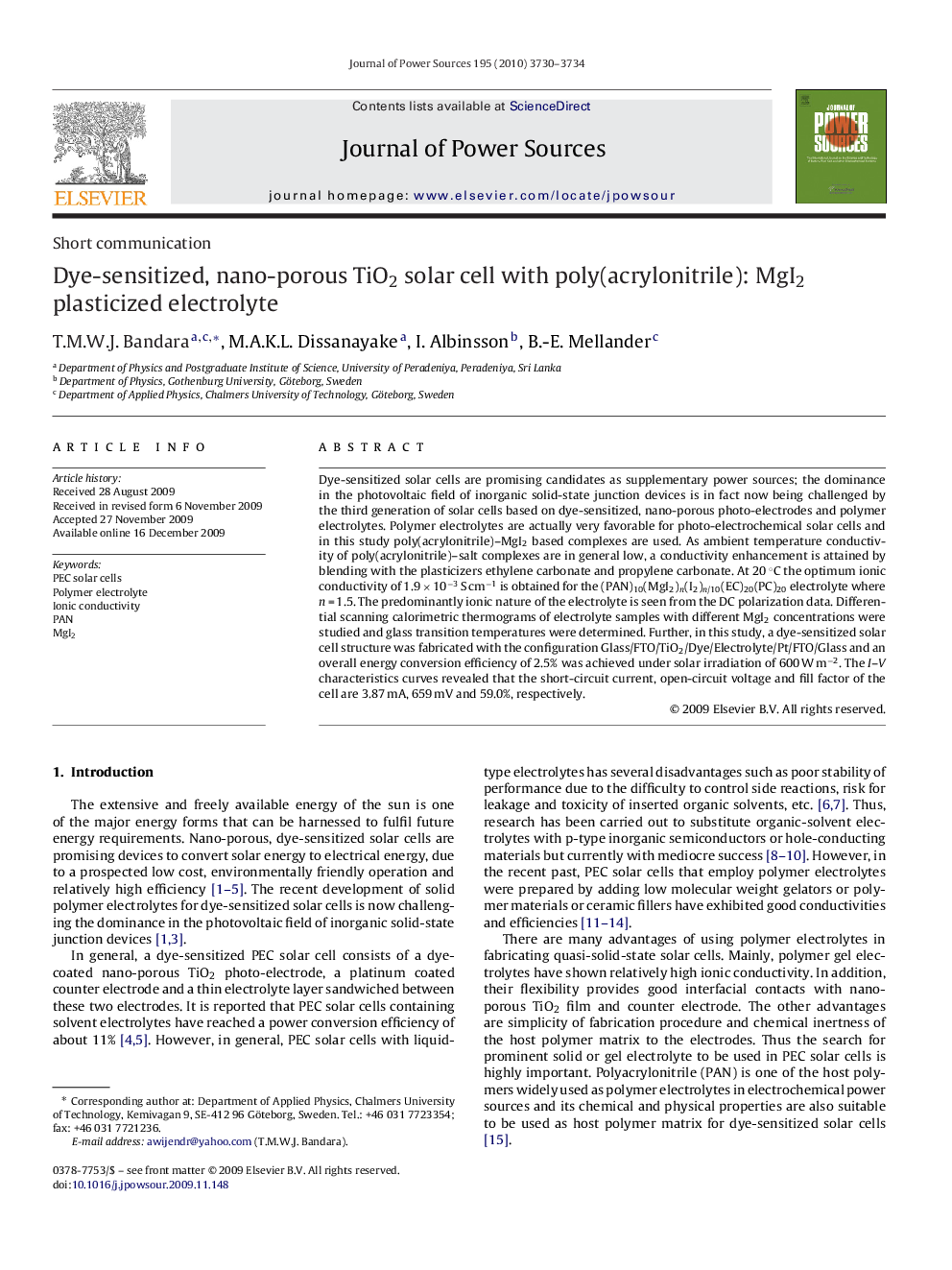| Article ID | Journal | Published Year | Pages | File Type |
|---|---|---|---|---|
| 1289554 | Journal of Power Sources | 2010 | 5 Pages |
Dye-sensitized solar cells are promising candidates as supplementary power sources; the dominance in the photovoltaic field of inorganic solid-state junction devices is in fact now being challenged by the third generation of solar cells based on dye-sensitized, nano-porous photo-electrodes and polymer electrolytes. Polymer electrolytes are actually very favorable for photo-electrochemical solar cells and in this study poly(acrylonitrile)–MgI2 based complexes are used. As ambient temperature conductivity of poly(acrylonitrile)–salt complexes are in general low, a conductivity enhancement is attained by blending with the plasticizers ethylene carbonate and propylene carbonate. At 20 °C the optimum ionic conductivity of 1.9 × 10−3 S cm−1 is obtained for the (PAN)10(MgI2)n(I2)n/10(EC)20(PC)20 electrolyte where n = 1.5. The predominantly ionic nature of the electrolyte is seen from the DC polarization data. Differential scanning calorimetric thermograms of electrolyte samples with different MgI2 concentrations were studied and glass transition temperatures were determined. Further, in this study, a dye-sensitized solar cell structure was fabricated with the configuration Glass/FTO/TiO2/Dye/Electrolyte/Pt/FTO/Glass and an overall energy conversion efficiency of 2.5% was achieved under solar irradiation of 600 W m−2. The I–V characteristics curves revealed that the short-circuit current, open-circuit voltage and fill factor of the cell are 3.87 mA, 659 mV and 59.0%, respectively.
